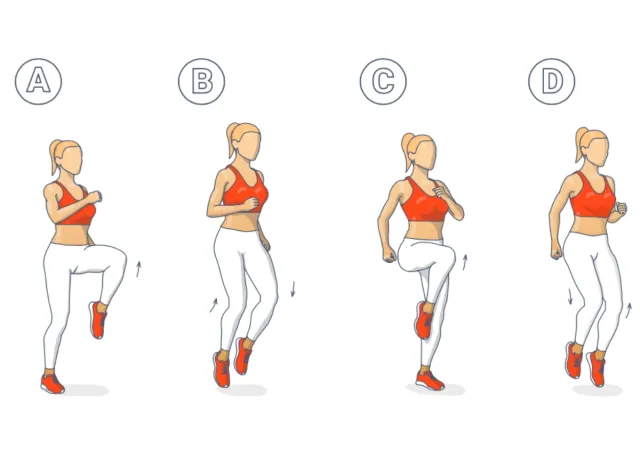As a personal trainer, I’ve seen it time and time again—clients who start strong with their walking workouts but eventually hit a wall. While walking is one of the simplest and most effective forms of cardio, doing the same thing day after day can get monotonous. Keeping it fresh, fun, and challenging is the key to staying consistent with any fitness routine. That’s why I always mix up workouts for my clients, introducing new moves that keep them engaged and push their bodies in different ways.
Incorporating variety into a workout doesn’t just prevent boredom—it also helps improve overall fitness. By constantly challenging your muscles with new exercises, you avoid plateaus and continue to see progress. Plus, keeping things exciting makes people look forward to their workouts, which is crucial for maintaining consistency. The more fun and dynamic your routine, the more likely you will stick with it and hit your goals.
I have you covered if you’re tired of the same old walking routine. Below are 10 quick and effective exercises to replace walking in your workout plan. These moves will raise your heart rate, build strength, and keep things interesting so you can stay lean without boredom.
High Knees
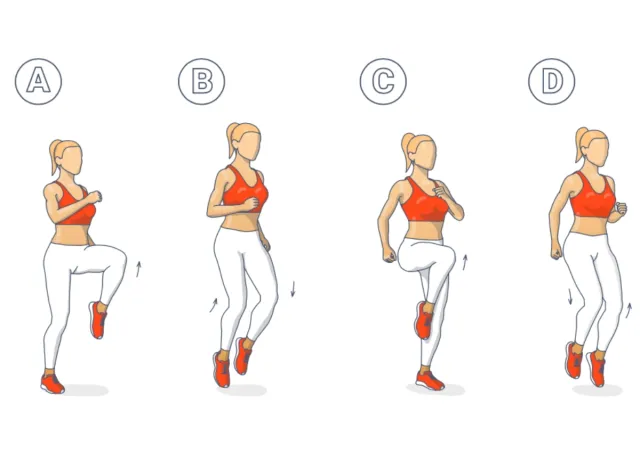

High knees are a dynamic way to activate your core, build leg strength, and get your heart pumping. They work your entire lower body and help improve speed and coordination.
How To Do It:
- Stand with your feet hip-width apart.
- Lift your knees to your chest, one at a time, as if you’re sprinting in place.
- Keep your core engaged and pump your arms for momentum.
- Perform three sets of 30 seconds. Rest for 20 seconds between sets.
Jumping Jacks
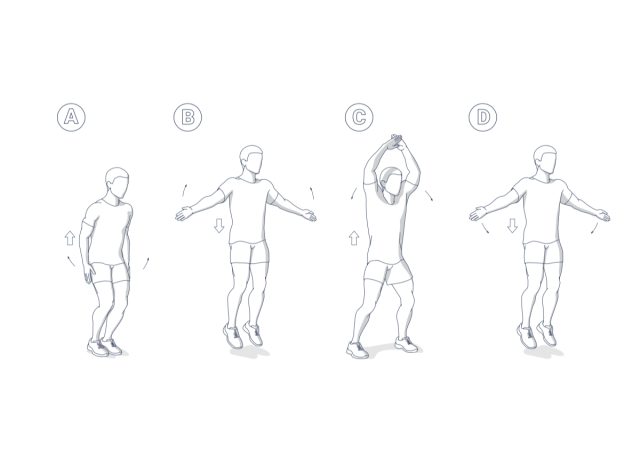

Jumping jacks provide a full-body workout, improve cardiovascular health, and are a fantastic way to get your blood flowing. They also strengthen your calves, shoulders, and core.
How To Do It:
- Start standing with your feet together and your hands at your sides.
- Jump your feet out while simultaneously raising your arms overhead.
- Jump back to the starting position, returning your arms to your sides.
- Perform 3 sets of 45 seconds. Rest for 15 seconds between sets.
Walking Lunges
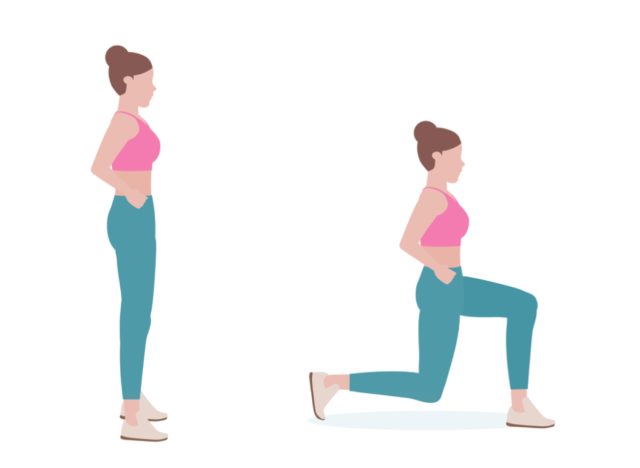

Walking lunges engage your quads, hamstrings, and glutes while improving balance and coordination. They’re an excellent strength-building exercise that also raises your heart rate.
How To Do It:
- Start standing with your feet together.
- Step forward with your right leg and lower into a lunge, keeping your knee from passing your toes.
- Push off with your left leg and step forward into the next lunge.
- Continue alternating legs as you move forward.
- Complete 3 sets of 20 lunges (10 per leg). Rest for 30 seconds between sets.
Shadowboxing
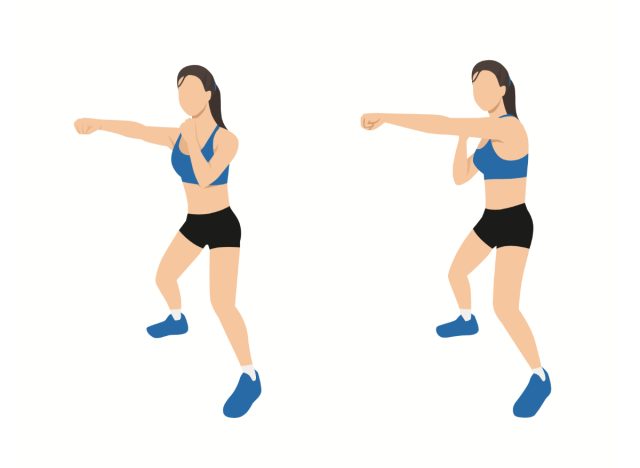

Shadowboxing is a full-body workout that strengthens your arms, shoulders, and core while torching calories. It also enhances coordination and mental focus.
How To Do It:
- Stand with your feet shoulder-width apart, knees slightly bent, and hands up in a boxing stance.
- Punch forward with alternating arms, incorporating jabs, hooks, and uppercuts.
- Move your feet as you punch to engage your entire body.
- Knock out 3 sets of 1 minute. Rest for 30 seconds between sets.
Squat Jumps
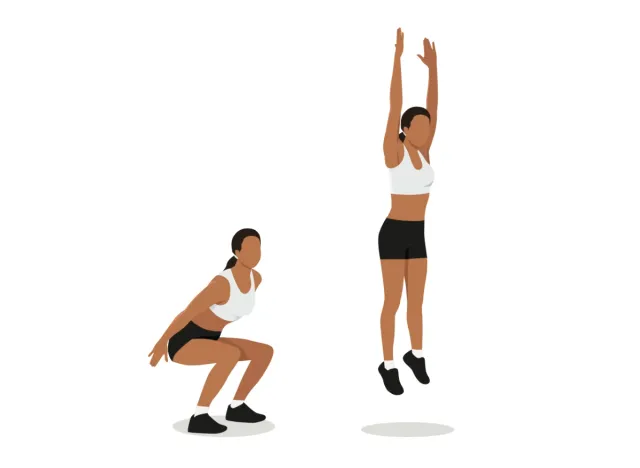

Squat jumps build explosive power in your legs and glutes while boosting cardiovascular endurance. They also help tone your lower body and improve muscle definition.
How To Do It:
- Stand with your feet hip-width apart.
- Lower into a squat, keeping your chest up and core tight.
- Explode up, jumping as high as you can.
- Land softly and immediately lower back into a squat for the next jump.
- Perform 3 sets of 15 squat jumps. Rest for 30 seconds between sets.
Speed Skaters
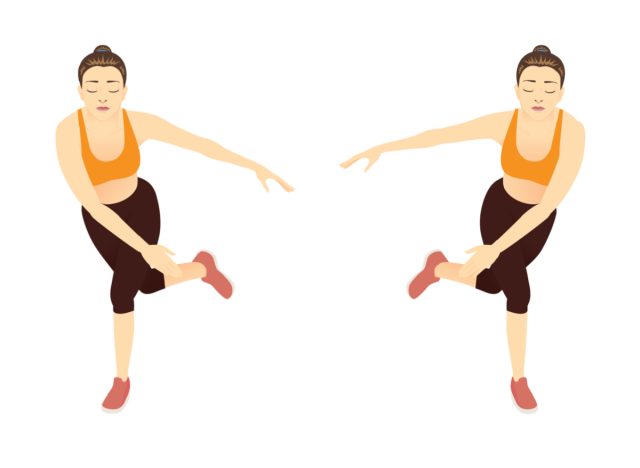

Speed skaters are lateral movements that challenge your balance, strengthen your legs, and help improve coordination. They’re perfect for building lower-body endurance while burning calories.
How To Do It:
- Stand with your feet hip-width apart.
- Jump laterally to the right, landing on your right foot with your left leg behind you.
- Push off with your right foot, jump to the left, and land on your left foot with your right leg behind you.
- Continue alternating sides, using your arms for balance.
- Complete 3 sets of 30 seconds, resting for 20 seconds between sets.
Lateral Shuffles
Lateral shuffles target your glutes, quads, and calves while also improving agility and quickness. This exercise is great for strengthening muscles that aren’t always worked in traditional forward-moving exercises like walking.
How To Do It:
- Stand with your feet shoulder-width apart and knees slightly bent.
- Shuffle to your right, moving your feet quickly but staying low in an athletic stance.
- After a few steps, shuffle back to your left.
- Knock out 3 sets of 30 seconds, resting for 20 seconds between sets.
Mountain Climbers
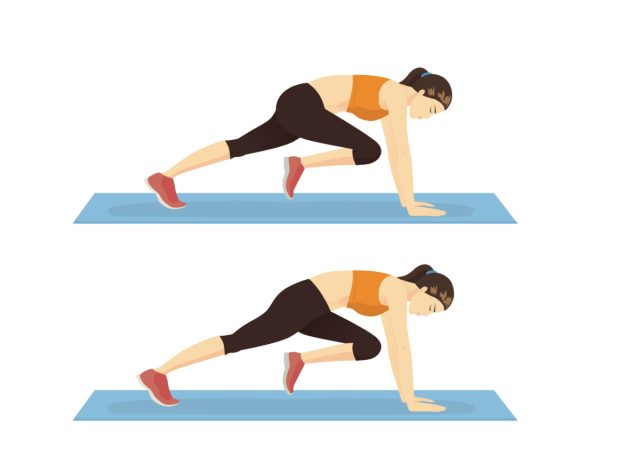

Mountain climbers engage your core, shoulders, and legs while giving you a full-body cardio workout. They help build endurance and burn calories quickly.
How To Do It:
- Start in a plank position with your hands shoulder-width apart.
- Bring your right knee toward your chest, then quickly switch legs, bringing your left knee in while extending your right leg back.
- Continue alternating legs as quickly as possible.
- Perform 3 sets of 45 seconds, resting for 30 seconds between sets.
Burpees
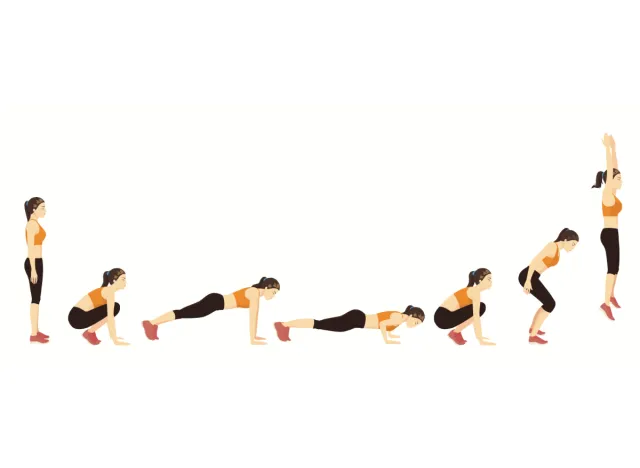

Burpees combine strength and cardio into one intense move, working your entire body. They build endurance, burn calories fast, and strengthen your arms, legs, and core.
How To Do It:
- Start standing with your feet shoulder-width apart.
- Lower into a squat and place your hands on the floor in front of you.
- Jump your feet back into a plank position, then immediately jump them forward again.
- Stand up and jump as high as you can, reaching your arms overhead.
- Complete 3 sets of 10 burpees, resting for 30 seconds between sets.
Plank-to-Pushup
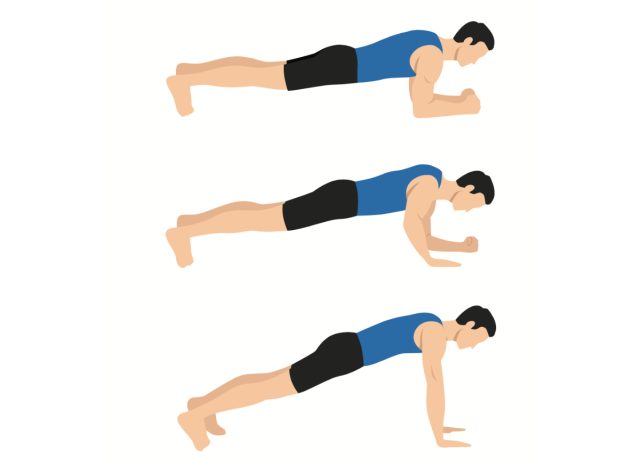

Plank-to-pushup is a dynamic core exercise that strengthens your abs, shoulders, and chest while keeping your heart rate up. It’s a more challenging, multi-muscle alternative to walking.
How To Do It:
- Start in a plank position on your forearms.
- Push up onto your hands one arm at a time, transitioning into a high plank.
- Lower back down to your forearms and repeat.
- Knock out 3 sets of 12 reps, resting for 30 seconds between sets.
As you get more comfortable with these movements, don’t be afraid to challenge yourself by increasing the intensity. You can add more sets, extend the time for each exercise, or bump up the number of reps to keep progressing. Small changes, like an extra 15 seconds of high knees or another round of squat jumps, can make a big difference in your overall fitness.
Remember, the goal is to keep pushing your limits while enjoying the workouts. The more you push yourself, the closer you’ll get to your goals!

